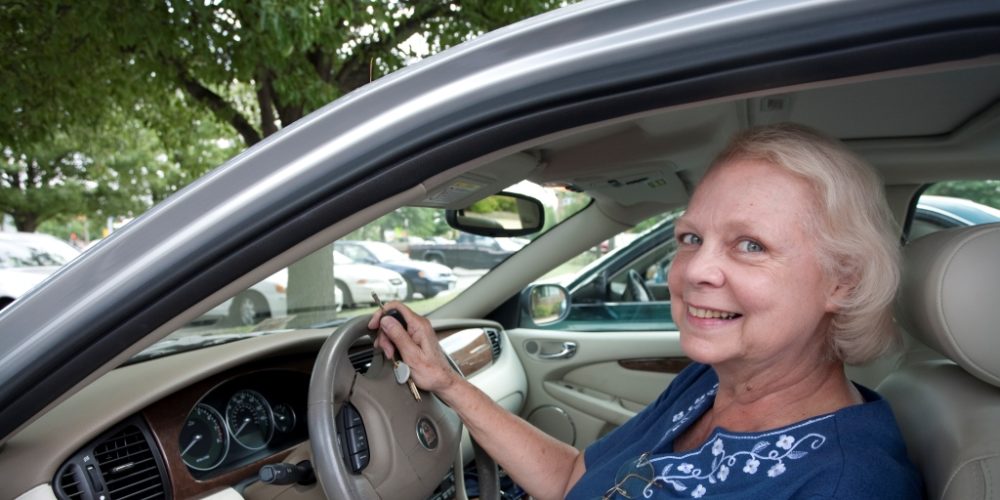Shared mobility (e.g., rideshare and Transportation Network Companies such as Uber and Lyft) is transforming transportation options, particularly for older adults and people with disabilities. This blog post explores the results of 2016 Transit Cooperative Research Program Report 188 Shared Mobility and the Transformation of Public Transit. A full copy of the report and an accompanying webinar are available at the TRB website.
TCRP Report 188 Background
Report researchers looked at seven U.S. metropolitan areas with transit systems of varied age and size in Fall 2015. Research consisted of interviews with over 75 transportation officials and private operators and 4,500 shared ride users, an assessment of paratransit practices and regulations, and current business models for public-private partnerships.
General Findings
- Greater use and availability of shared modes is associated with greater likelihood to use transit more frequently and have reduced transportation spending.
- Shared modes for the most part complement public transit but in some cases compete. Shared modes can complement transit through integration of service, advertising each others’ availability, and coordinated payment methods.
- More provider options mean that mobility can be improved for a wider, more equitable group of users.
- New business models can reduce costs and provide different vehicles for paratransit service.
How Older Adults and People with Disabilities Are Using Shared Mobility Services
According to the research, transit agencies are recognizing ride sourcing as an opportunity to expand use of transit for first- and last-mile or paratransit purposes. Also, many transit agencies see that the partnerships, business models, and technology used by rideshare providers are possible ways to provide increased mobility at a potentially lower cost while improving rider experience. The TCRP survey results indicate that transit agencies are open to private providers developing customer-facing technology that may be useful to travelers who have disabilities.
The cost of paratransit trips has increased from $14 to $33 per trip between 1999 and 2012 based on an FTA study cited in the TCRP research, and demand for trips has increased. Transit agencies and private companies alike are expressing interest in using partnerships, business models and technology to provide increased mobility, lower costs, and an improved rider experience.
Issues Related to Paratransit Provision Using Rideshare Companies
When it comes to paratransit provision, however, uncertainties exist about how federal regulatory requirements apply to private transportation partners. New technologies will likely apply in the areas of reservations, confirmations, scheduling, and cancellations; dispatch, routing, combining riders who have similar trips, mobile apps, vehicles tracking, and real-time customer feedback. With that said, business models for ride sourcing are slightly different than traditional dial-a-ride or demand response service. Other considerations exist if a driver is considered an independent contractor and is not subject to employment conditions of employees. Specific areas of concern include:
FTA-required drug and alcohol testing that applies to parties contracted with a public transit agency including taxi operators in a contracted relationship with a federally funded agency.
Liability and occupational safety related to transferring customers. Potential exists for injury to drivers and customers if drivers are not properly trained to assist passengers.
Door-to-door vs. curb-to-curb service. According to FTA requirements, a driver must “provide assistance to those passengers who need assistance beyond the curb in order to use the service unless such assistance would result in a fundamental alteration or direct threat” (FTA 2015).
Accessible rides and accommodating wheelchairs and service animals: Ride sourcing companies are showing increased interest in ADA accommodations, but there have been inconsistent results.
Vehicle safety and inspection standards.
Title VI analysis of mobile app-based payment systems and how minority and low-income customers might be affected.
Innovations that Can Bring Positive Change for Older Adults and People with Disabilities
TCRP Report 188 identifies innovations likely to have an impact on the older adult and disability communities. These innovations include:
- Reservation system updates using mobile apps or web-based reservations while maintaining phone reservations.
- Using concierge services as an interface for customers who may not have smartphones.
- Providing same-day paratransit rides similar to premium paratransit service offered by agencies that also provide regular, advance reservation paratransit service.
- Providing feeder paratransit services (to and from transit) through ridesource services without the longer transfer times of traditional transit paratransit services.
Ideas for Improving the Private Transportation Sector Experience for Older Adults & People with Disabilities
The report lists the following areas as ways that the private transportation sector and TNCs can improve the customer experience for older adults and travelers with disabilities:
- Conducting ADA service awareness and training
- Developing niche services for older adult passengers or passengers with disabilities
- Providing career incentives to drivers for serving accessible trips
- Establishing safety training, background checks, and certifications for niche services
- Standardizing user interfaces (e.g., apps, reservations, fare payment) so that all are accessible and easily read by those using screen readers
For more information on ride source partnerships and Transportation Network Companies, look for the 2016 NADTC Trends Report, coming to the NADTC website in Winter 2017.

Leave a Reply